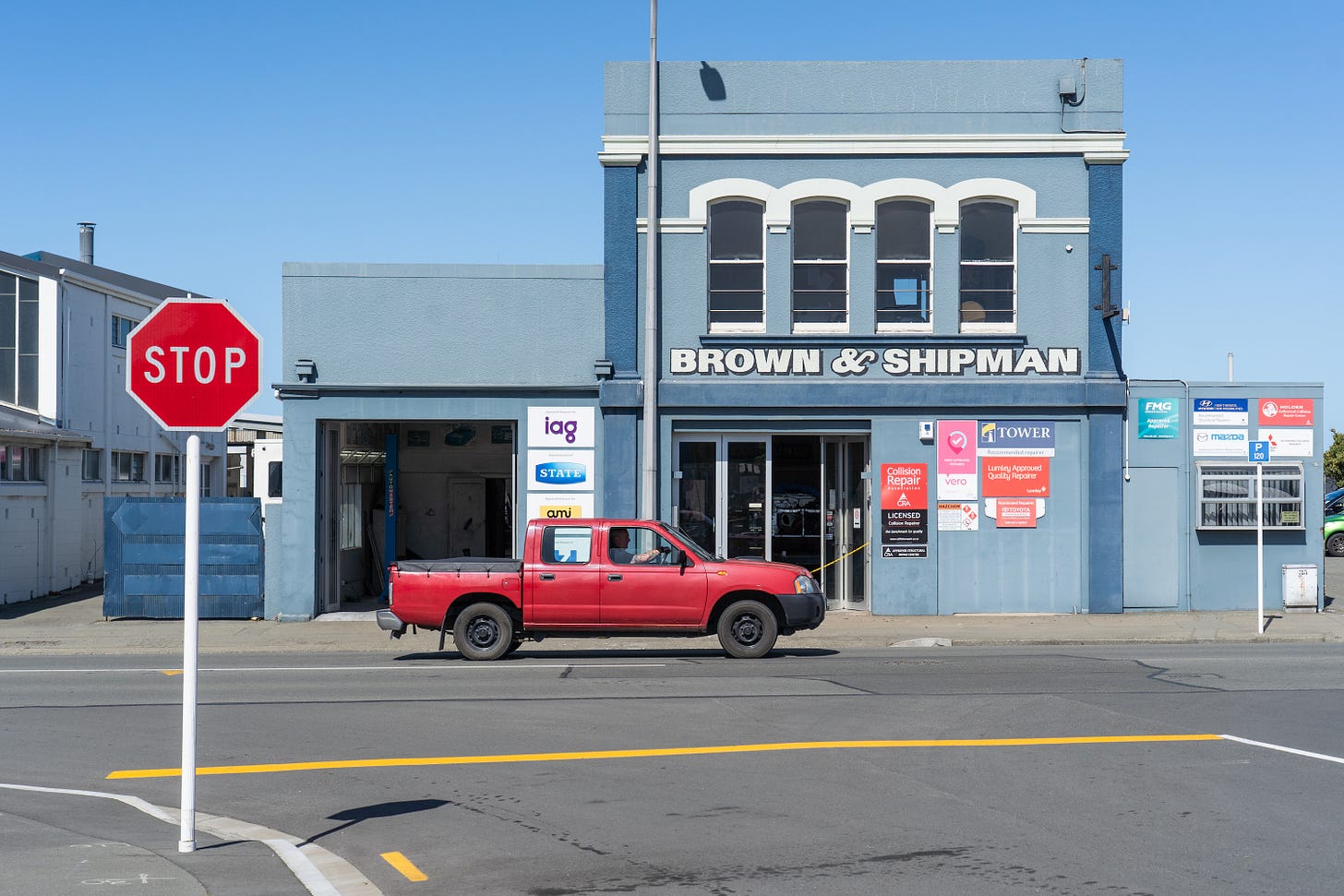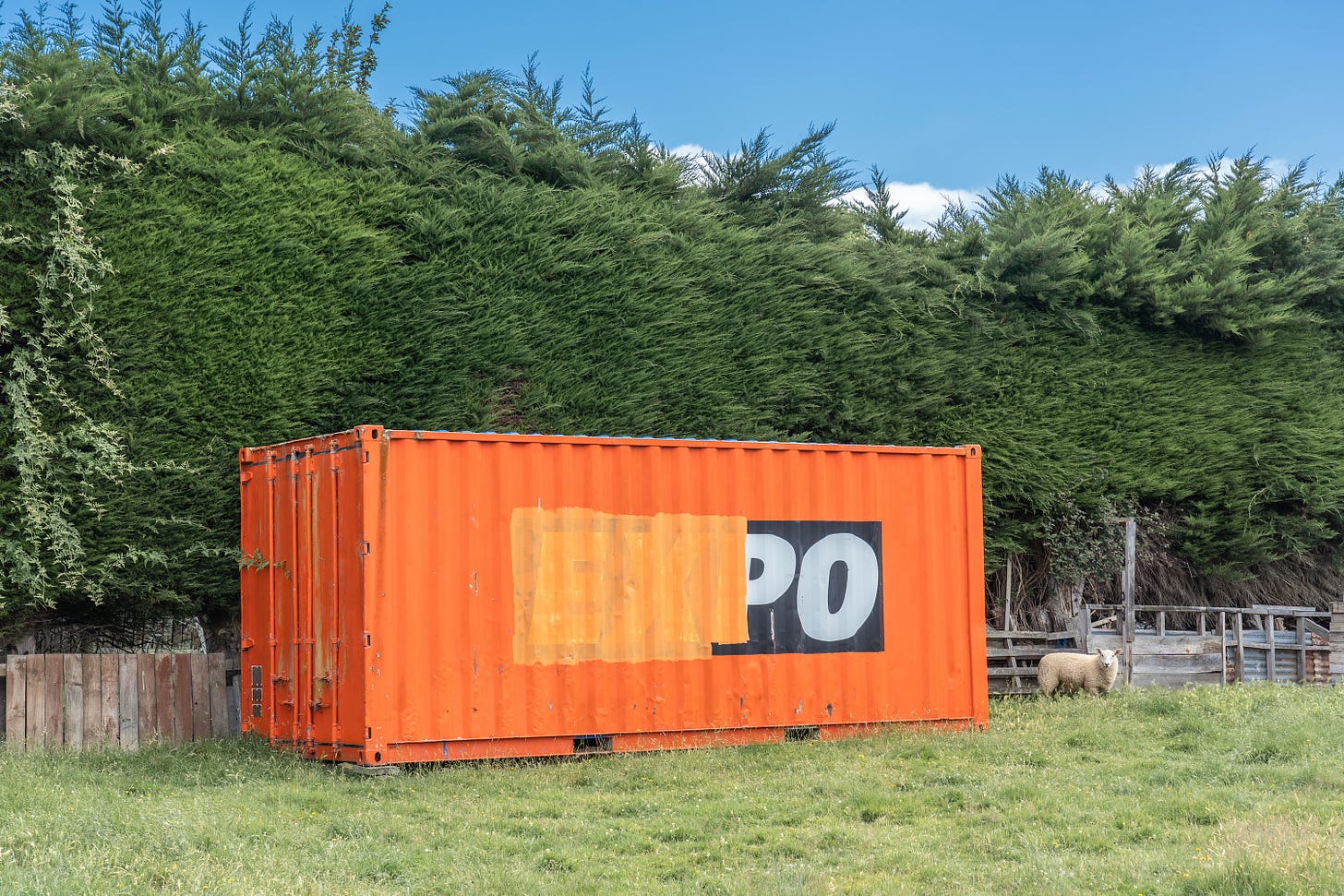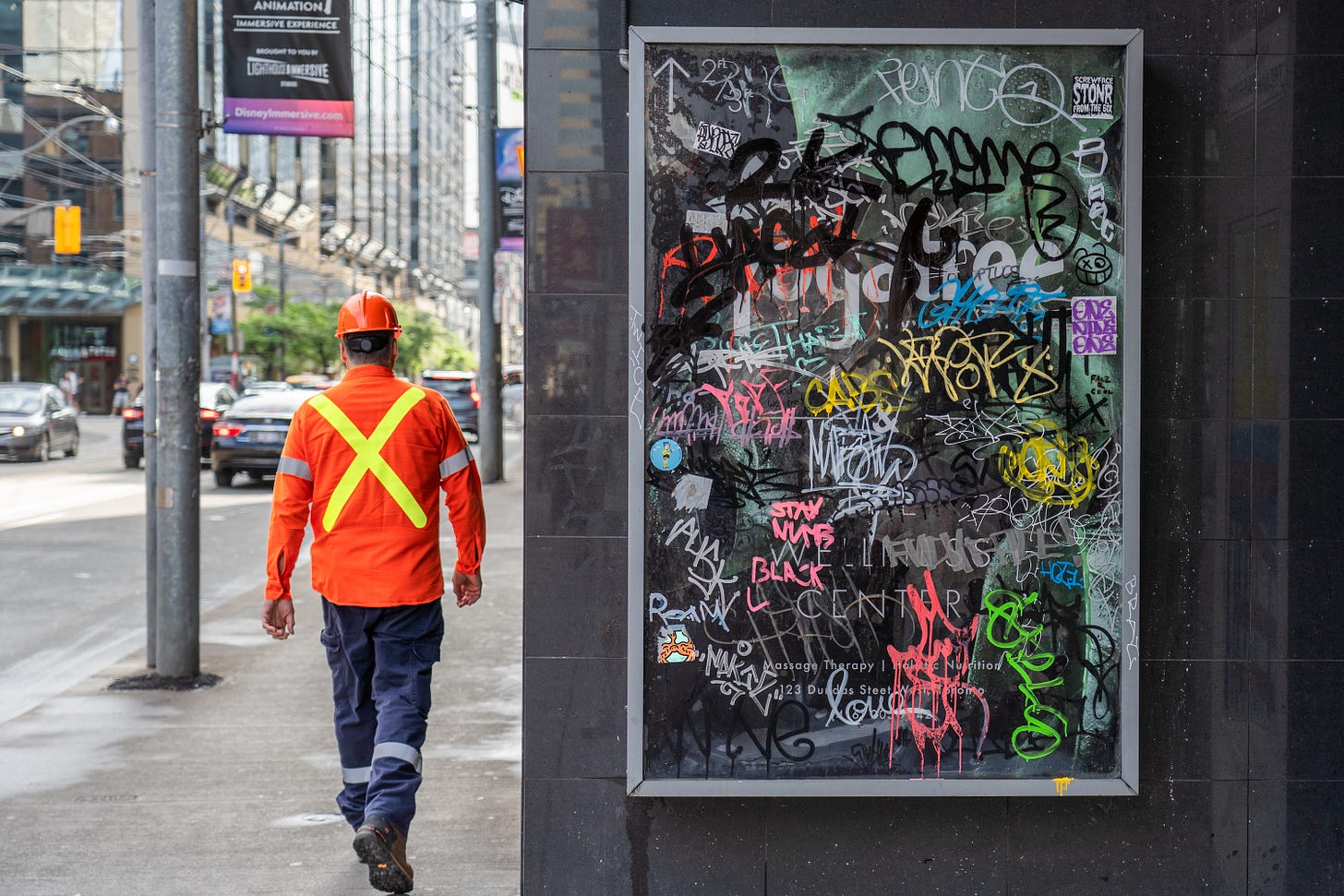Street photography is generally defined as the practice of taking candid photographs in public places of everyday life that include people or evidence of human activity. For some, it’s important to distinguish this style of photography from, for example, architectural photography (the documentation of specific buildings for the love of architecture or for an architectural practice, or real estate agency) or street portraits (posed photos of strangers who agree to have their photo taken where you have encountered them). There is no hierarchy of photography, with one style or approach better or more worthy than others. Most photographers use different approaches to capture a range of images that fit into different categories.
However, it is worth thinking about different styles, conventions, and expectations, and how they affect the relationship between the photographer and the subject and between the resulting image and the viewer.
Nick Turpin is a professional London-based photographer who takes his street photography seriously. He started the iN-PUBLiC street photography collective in 2000 and his website includes a useful Beginners Guide to Street Photography. In 2017 he started the #CANPUBPHOTO hashtag initiative, which provides a definition and discussion of street photography and encourages street photographers to use the hashtag on social media. The hashtag indicates that the image is a photograph (rather than something composited or created using artificial intelligence), that it is a candid image that was shot in a public place, and it was not staged or manipulated.
Many street photographers hope that their efforts to document everyday scenes will result in a valuable record of public life for future generations to appreciate. As the Sydney-based street photographer, Alex McClintock, wrote in a recent piece in The Guardian, “almost all street photos become fascinating historical documents after enough time passes.” He explains that, after much practice, he is now less self-conscious about taking candid photos of people in public. “If you act like you’re meant to be there”, he says, “you can get away with pretty much anything.”
Like many people who like to photograph in public places, I often snap an image without anyone noticing. At other times, people can see what I’m doing but it isn’t a problem. Occasionally, my presence is met with suspicion and I must explain myself. Here are a few examples.

I took this shot in the main commercial street that runs through Oamaru, New Zealand, which is about 110 km north of Dunedin, where I live. The bright colours and the beer sign attracted my attention. I was standing in a wide bushy median strip between two double lanes of traffic for about 15 minutes before the manager of the orange WOF (Warrant of Fitness) shop came out of the building and crossed the street to ask me what I was doing. I said that I liked the orange colour of the building and how it worked with the blue and red Super Liquor shop next door. He seemed unconvinced but he was happy to talk about his choice of colour for his business. A few minutes later, a customer came out of the liquor store, approached me, and demanded to know why I was taking photos of him entering and exiting the shop. I told him I wasn’t, which was true. I was waiting for the sun and the shadows to be right and for a person or car to pass by to complete what I hoped would be a good shot of the buildings. I did my best to put his mind at rest and stood my ground. Eventually, a woman who was working in the same shop came over to tell me that customers were concerned and she wanted to know what was I doing. Again, I did my best to explain and I remained until I had this shot with the man dressed in black walking by (who, if he saw me, clearly didn’t care).
I admit that standing in the same spot for 20-30 minutes waiting for all the elements of a composition to fall into place is not a good strategy if you aim to get a candid shot without arousing suspicion. I’ve tried to work faster but sometimes you just have to wait. Alternatively, you can decide to move on without the shot you have imagined.

I had a similar experience with this shot in Timaru (which is further north up State Highway 1 from Oamaru). I was walking up the street and was struck by the red stop sign above the blue square and the blue and white automotive parts building. I framed the shot and waited for the right vehicle to drive by. After about 15 minutes, the manager of Brown & Shipman came out of the building and said that she and her staff were watching me with some concern. As it turns out, the business had been broken into three times during her five years as the manager. One time, the crooks stole a lot of keys and several cars. I showed her my Instagram account and offered to email her a copy of the photo if I managed to take anything I was happy with. We had a good chat and she was pleased when I sent her a copy of this image.

I think a lot of potentially good street photos are ruined when the subject looks straight into the camera, although I’m not sure that holds for sheep. On the day I took this photo in Outram (which is about 25 km west of Dunedin), there was just me and the woolly jumper on the scene. I was passing through Outram more recently and revisited the same location. The orange shipping container was still there, but the four-legged futon had wandered off. A pickup truck drove by then turned around and stopped near me. The driver was the owner of the paddock. A retired builder, he used the shipping container to store building supplies. he was no longer grazing sheep and was planning on selling the property. He told me a lot about the area and was able to answer some questions I had about some of the more interesting buildings. When I find the scrap of paper with his email address on it, I’ll send him this photo and the more recent one (sans sheep).

During a trip to Canada last year, I discovered this graffiti-filled frame across the street from where I once lived in downtown Toronto. I wanted to fill the right two-thirds of the frame with the wall and graffiti and the left third with the back of a passing pedestrian (a person facing the viewer would have distracted too much from the graffiti). As I was waiting for the right person to walk past, someone came up from behind me and yelled “What are you doing, taking photos of people without their permission?”. He was pretty agitated. I said I was trying to get a good shot of the graffiti, which was two-thirds true, and he eventually walked off. In such circumstances, there is no point telling someone that, in Canada, as in New Zealand, America, and most other countries, it is perfectly legal to photograph strangers in public places without their knowledge or consent. However, what is legal is not always ethical or advisable.

This photo was also taken in Toronto. Yonge Street (which, at 86 km, is the longest street in the world) is not the most upmarket street in downtown Toronto. You can see some interesting characters there. As I walked down the busy street, I saw this man with an interesting headdress approaching and I quickly took one candid portrait shot (this image is cropped to show just the upper half). He spotted me after I had lowered my camera and stopped, turned around, and started striking poses. I obliged by taking a few shots that I knew I wouldn’t keep and thanked him. He then went on his way and I went on mine.
These photos and the stories behind them show that the choice between candid street, architectural, and portrait photography is not always clear and simple. A situation might result in a combination of approaches, especially if you hit the street without a set plan or approach in mind. I have to say, though, that my interactions with people often leave more of an impression on me than the places or the photographs.
Technical Details
These photos were taken with a 24-megapixel Sony A7 III full-frame digital camera. I used a Sony Zeiss 55mm F1.8 lens for the first photo (56a) and a Sony FE 24-105 F4 G OSS lens for the others. Other details are included in the captions. All the images were shot in RAW format and processed using Adobe Lightroom. They have been sampled down to 3,000 pixels in the longest dimension for this post.
What’s next?
I’ve been engaging more with others here on Substack who are sharing their images and writing about photography. There are quite a few of us here now and some good exchanges are taking place. I’d like to reference some of them in future posts. A conversation is usually more productive than a monologue.
I now have a personal website
I am not a professional photographer and I don’t try to sell my photographs, but I thought it would be useful to have a personal website to present my photographs and to serve as a home base. After trying a few options (including WordPress, which I used for many years when I taught design), I decided to set up a site using Squarespace. It’s pretty basic, but it’s a start. I began by creating links to folders of photos of the political marches and rallies I’ve been documenting recently and I’ll add a selection of street photos soon. You can find my new website at markmcguire.net.
What do you think?
Thank you for taking the time to read this post. I invite you to leave a comment below.




Nice subjective article, Mark.
I'm curious to know, what drives you to do street photography and what stops you from asking people for portraits or do architectural photography?
I love the the 5b photo, colours and light work so well in this image!
Thanks for this. Provokes some thought about ethics, legality etc. It’s good that you stood your ground and also good that in each situation you were challenged you tried to de-escalate. I had a situation that I wrote about on my Substack when I was challenged very aggressively and responded very aggressively without thinking, and it could have got nasty real fast. Being polite doesn’t cost anything and will usually disarm people who are challenging you, and I should have remembered that!